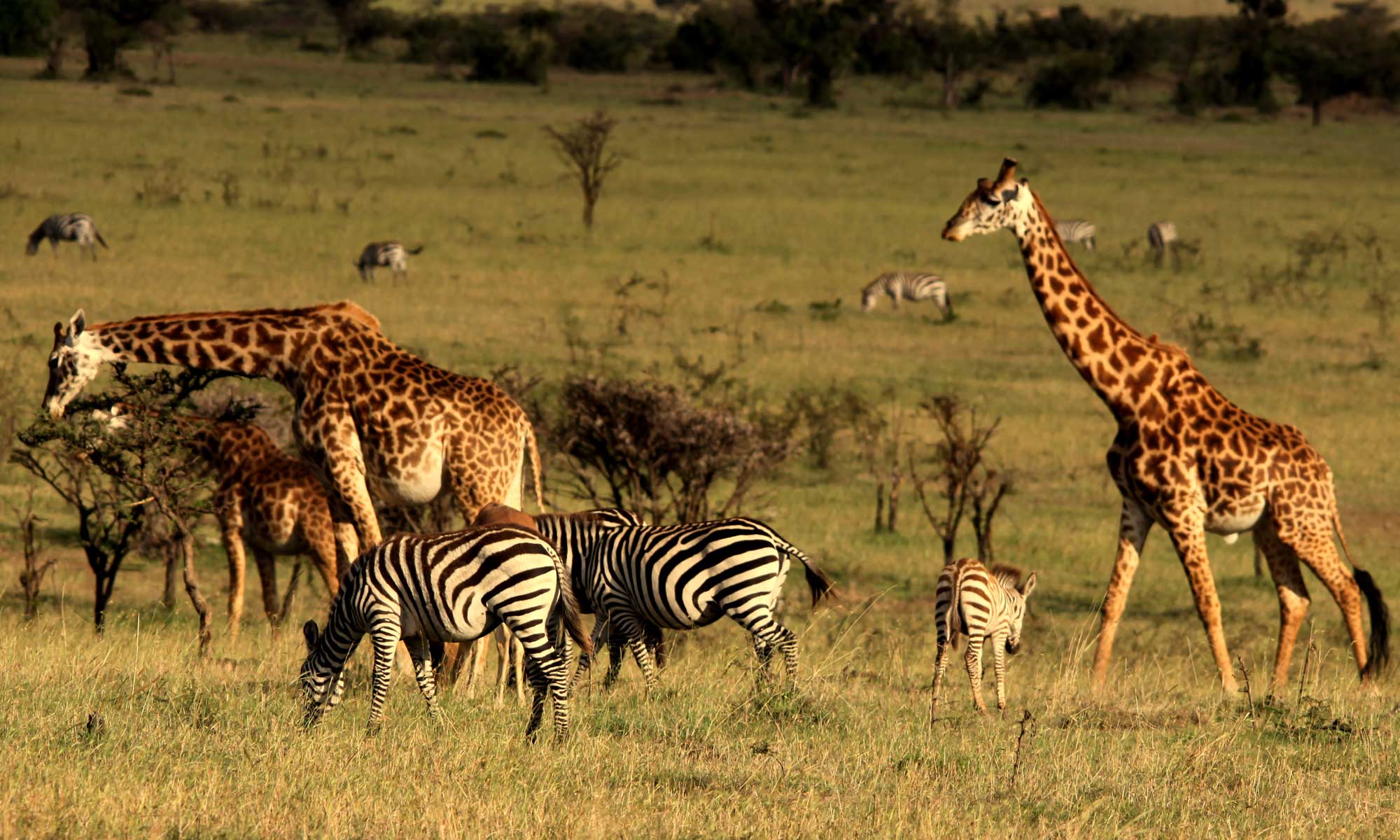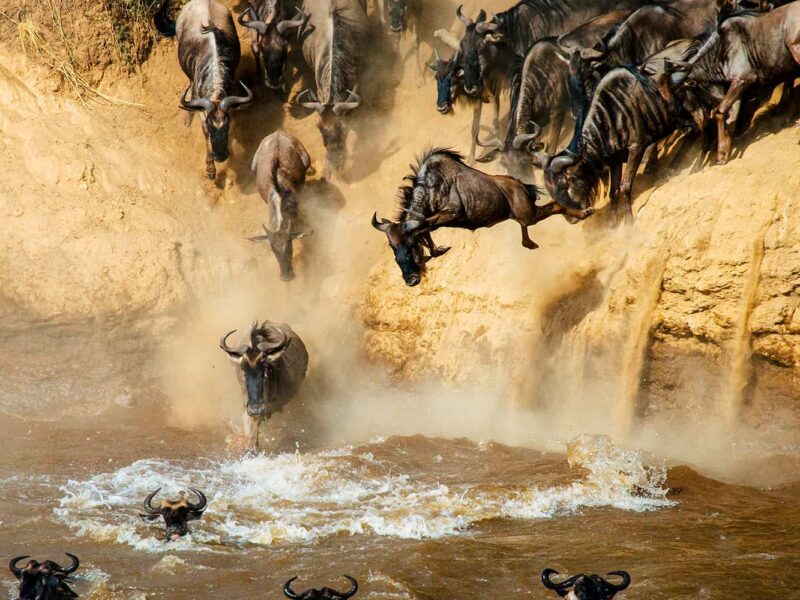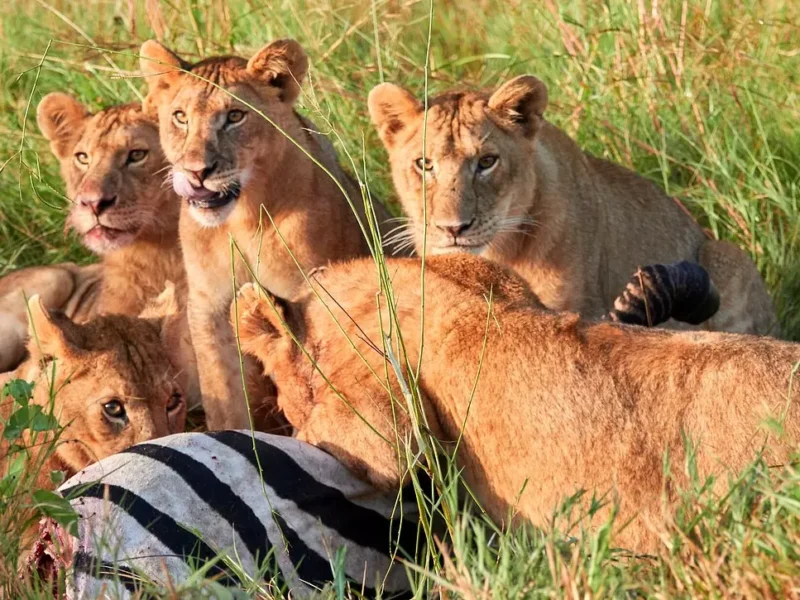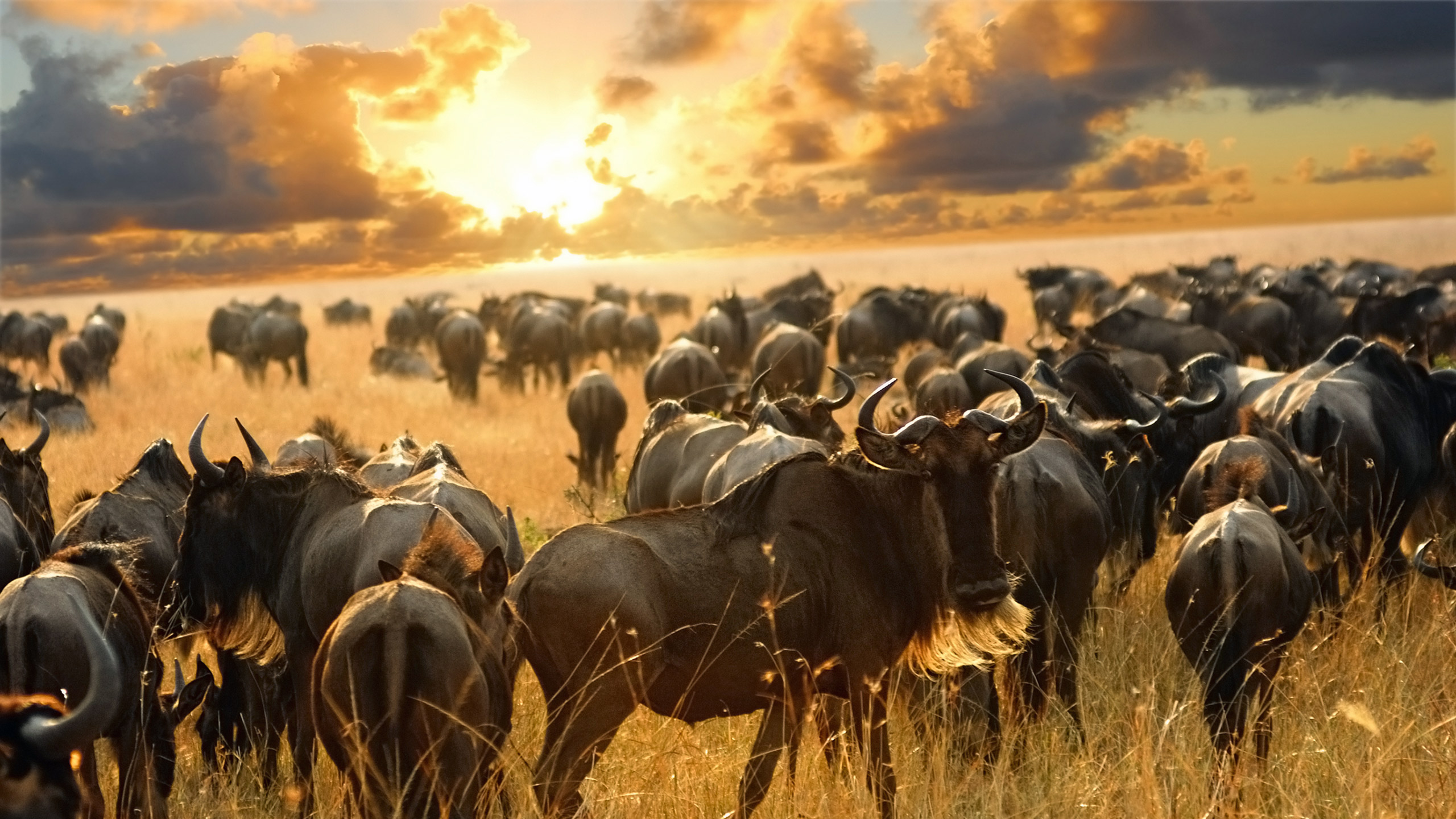
The Great Migration in Kenya: A Spectacular Natural Phenomenon
April 1, 2025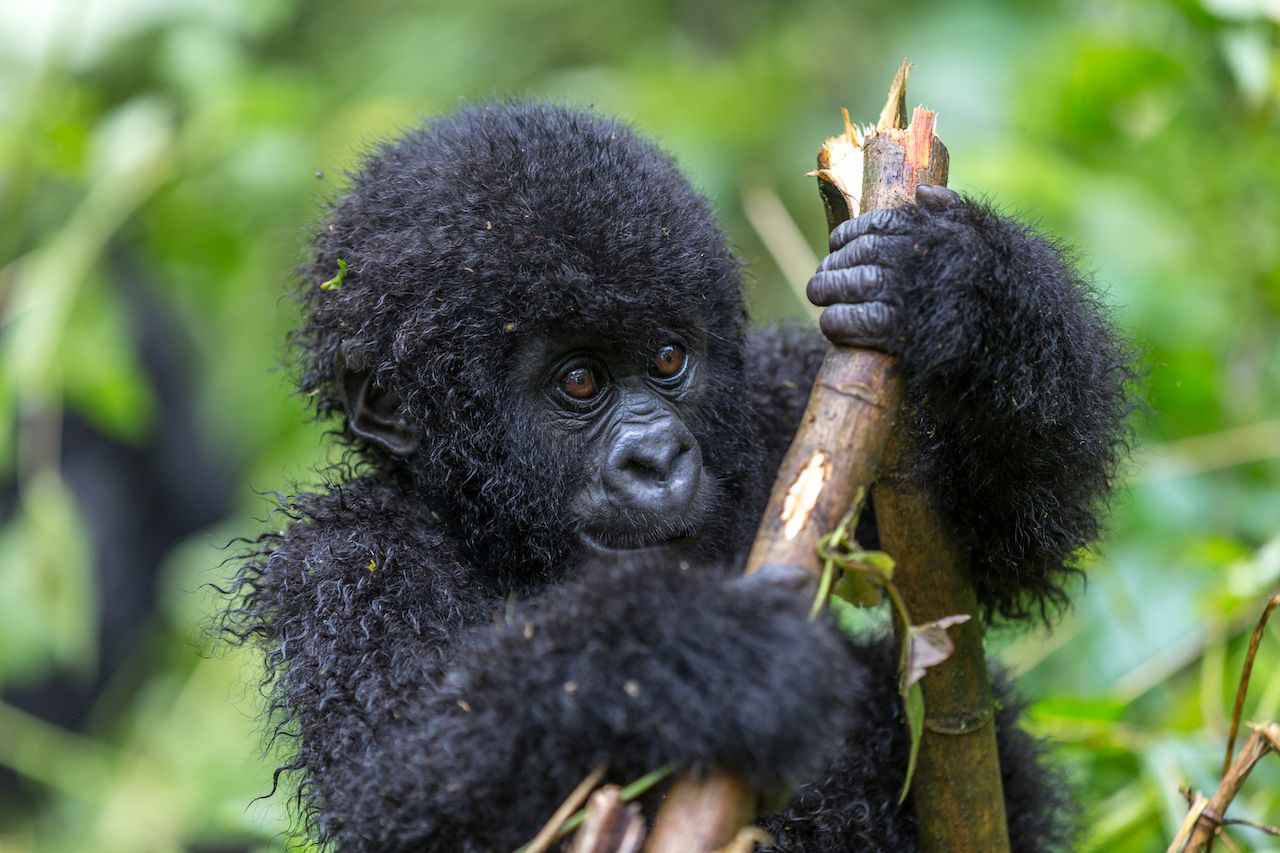
Uganda National Parks
April 1, 2025Maasai Mara National Reserve: A Premier Tourist Attraction in Kenya
Maasai Mara National Reserve, often referred to simply as the “Mara,” is one of Kenya’s most iconic and sought-after tourist destinations. It is located in the southwestern part of the country, bordering Tanzania’s Serengeti National Park. The reserve is named after the Maasai people, the semi-nomadic pastoralists who have lived in the region for centuries, and the Mara River that runs through it.
The Maasai Mara is renowned worldwide for its breathtaking landscapes, abundant wildlife, and unparalleled safari experiences. It offers a perfect blend of natural beauty, cultural heritage, and thrilling wildlife encounters. Let’s explore in detail why Maasai Mara is such a prominent tourist attraction in Kenya.
1. The Great Migration: A Natural Wonder
One of the most significant and famous events that draw tourists to Maasai Mara is the Great Migration, which is considered one of the most spectacular wildlife phenomena on Earth. This annual migration, typically occurring between July and October, involves more than 1.5 million wildebeest, along with zebras, gazelles, and other herbivores, migrating from Tanzania’s Serengeti to the Maasai Mara in search of greener pastures and water.
During the migration, the animals must cross the Mara River, where they face treacherous waters filled with crocodiles and other predators. The dramatic river crossings, where hundreds of wildebeests and other animals leap into the river, make for a thrilling and unforgettable spectacle. This migration also attracts a large number of predators, including lions, cheetahs, leopards, and hyenas, who take advantage of the vulnerable migrating herds.
For many tourists, witnessing the Great Migration is a once-in-a-lifetime experience, drawing visitors from all over the world who come to witness nature’s raw power and the cycle of life and death that plays out every year.
Incredible Wildlife Diversity in Maasai Mara National Reserve
Maasai Mara National Reserve is one of the premier safari destinations in Africa, renowned not only for its spectacular landscapes but also for its incredible diversity of wildlife. This rich biodiversity is one of the key reasons why the reserve attracts thousands of tourists every year. Whether you’re on a game drive, walking safari, or simply admiring the scenery, the sheer number and variety of animals in the Mara are breathtaking.
1. Wildlife Diversity
Here’s a detailed breakdown of the wildlife diversity you can expect in Maasai Mara:
1. The Big Five
The “Big Five” — lion, elephant, buffalo, leopard, and rhinoceros — are the most sought-after animals for safari-goers, and Maasai Mara is one of the best places in the world to see them.
Lions: The Maasai Mara is home to one of the largest lion populations in Kenya. The iconic lion prides of the Mara are often seen basking in the sun, hunting in the plains, or resting under the shade of trees. The Mara’s relatively large lion population is one of the highlights of any visit. The famous “Mara Lions” are often seen in the open plains, making them one of the most photographed lions in the world.
African Elephants: The Mara is also home to a large population of elephants, both males and females. These gentle giants can often be seen in herds, feeding on the abundant vegetation and sometimes drinking at the Mara River. The reserve offers great opportunities to observe elephant behavior up close, whether it’s a group of elephants protecting their young or a lone bull elephant in the savannah.
African Buffalo: These massive, powerful creatures are commonly spotted in large herds in the Maasai Mara. While they might look slow and cumbersome, buffalo are strong and territorial animals that can be quite dangerous. Buffalo herds are typically seen grazing in the open plains or near water sources, where they provide an important food source for predators.
Leopards: Though elusive and solitary by nature, leopards are found in the Mara’s dense bush and tree-covered areas. They are often seen perched on branches, waiting for prey, or stealthily walking through the underbrush. Leopard sightings are less frequent than lions or elephants, making it a special treat for wildlife photographers and safari-goers.
Rhinoceros: The Maasai Mara is home to both black and white rhinoceroses, though their populations are relatively small. The black rhino, particularly endangered, is a more frequent sighting in the Mara, often found in more remote parts of the reserve. The Mara’s efforts to protect rhinos through anti-poaching measures and conservation programs make it a vital area for rhino protection in Kenya.
2. Birdlife
1. Raptors and Birds of Prey
The Masai Mara is an excellent destination for spotting birds of prey, many of which are majestic and powerful hunters. Raptors are often seen soaring high above the savannah or perched on trees, scanning the ground for potential prey.
African Fish Eagle: The African Fish Eagle is perhaps one of the most iconic birds of prey in the Mara. With its distinctive white head, dark body, and sharp, hooked beak, it is often found around the rivers and lakes of the Mara, where it hunts for fish.
Martial Eagle: This is one of the largest eagles in Africa and can be spotted in the Masai Mara. Martial eagles are formidable hunters, preying on medium-sized mammals, birds, and reptiles.
Steppe Eagle: The Steppe Eagle migrates to the Mara from Asia and Europe in the winter months. It is a large bird of prey, often seen hunting for small mammals and birds.
Tawny Eagle: The Tawny Eagle is a common resident in the Mara, often seen perched on trees or scavenging carcasses. It has a large, powerful beak for tearing apart meat.
Bateleur Eagle: Known for its striking appearance and aerial acrobatics, the Bateleur is often seen in the Masai Mara, circling the savannah in search of food.
Secretary Bird: A tall, long-legged bird of prey, the Secretary Bird is known for its remarkable hunting technique, in which it strikes its prey—such as snakes and insects—with its powerful legs. It is often seen walking through the grasslands of the Mara.
2. Vultures
Vultures are important scavengers in the Masai Mara, playing a crucial role in cleaning up the ecosystem. Several species can be seen around carcasses or soaring in the sky.
White-backed Vulture: The White-backed Vulture is commonly found in the Mara. This large vulture often feeds on carcasses and can be seen perched in trees or on the ground near kills.
Lappet-faced Vulture: With its large size and distinct appearance, the Lappet-faced Vulture is another common species in the Mara. It is known for being one of the more aggressive vultures, often dominating other scavengers at a carcass.
Rüppell’s Vulture: A critically endangered species, Rüppell’s Vulture can sometimes be seen in the Masai Mara. They are large, with broad wings and a strong build, often found near other vultures feeding on carcasses.
Hooded Vulture: This smaller vulture is often seen feeding on smaller carcasses, such as those of birds and smaller mammals. It has a distinctive black and white plumage with a bare head.
3. Waders and Shorebirds
Along the Mara River and in the wetland areas of the reserve, various species of waders and shorebirds can be seen, particularly during the rainy season when water levels rise.
Yellow-billed Stork: This striking stork is easily recognizable by its long, yellow bill. It is commonly found in the wetlands of the Mara, where it feeds on fish, amphibians, and insects.
Black-winged Stilt: The Black-winged Stilt is a slender wader often found in shallow water. It has long, pink legs and a sharp, probing bill with which it hunts for aquatic invertebrates.
Common Sandpiper: This small, slender shorebird can be spotted around the edges of rivers and wetlands, foraging for insects and small crustaceans.
Wood Sandpiper: The Wood Sandpiper is often found around temporary pools of water, where it forages for food. Its distinctive, delicate call is often heard as it moves about in the shallows.
4. Waterfowl
In addition to waders, the wetlands and rivers of the Masai Mara host a variety of waterfowl species, particularly around the Mara River, where waterfowl congregate.
Egyptian Goose: A common waterfowl in the Mara, the Egyptian Goose is easily recognized by its brown and white plumage and distinctive pink bill. It can often be seen grazing on the grasslands or swimming in the river.
African Jacana: Known for its long, slender legs and large feet, the African Jacana is commonly seen walking on floating vegetation in the wetlands. Its habit of walking on lily pads gives it the nickname “lily-trotter.”
Pied Kingfisher: A striking black-and-white bird, the Pied Kingfisher is one of the most common kingfishers in the Mara. It is often seen diving into the Mara River to catch fish.
White-faced Whistling Duck: This duck is found in the wetlands and lakes of the Mara and is known for its characteristic whistling call. It often feeds on grasses and seeds.
5. Migratory Birds
The Masai Mara is an important stopover for migratory birds, particularly during the wet season. These birds travel long distances from Europe, Asia, and other parts of Africa to the Mara’s abundant food resources.
European Swallow: The European Swallow migrates to the Masai Mara in the rainy season, often forming large flocks. These agile fliers can be seen swooping through the air, catching insects.
Lesser Kestrel: The Lesser Kestrel is a small falcon that migrates from Europe to the Masai Mara. It can be seen hunting insects and small mammals during the wet season.
Yellow Wagtail: This small, brightly colored bird is often seen near wetland areas during its migration, feeding on insects along the riverbanks and in the grasslands.
Pied Avocet: The Pied Avocet is a wader that migrates to the Mara’s wetlands, where it feeds on invertebrates by sweeping its long, upturned bill through the water.
6. Songbirds and Passerines
The Masai Mara also hosts a wide variety of smaller, colorful songbirds and passerines, which are often seen flitting through the trees or feeding on the ground.
Superb Starling: The Superb Starling is a brilliantly colored bird with metallic blue, green, and orange feathers. It is commonly seen hopping around the savannah, often in small groups.
Yellow-bellied Eremomela: This small, yellow-bellied songbird is often found in shrubs and low vegetation, where it feeds on insects and sings its sweet, trilling song.
Red-capped Lark: The Red-capped Lark is a striking songbird with a bright red cap. It is often seen in the open savannah, where it feeds on seeds and insects.
African Paradise Flycatcher: Known for its long, elegant tail feathers, the African Paradise Flycatcher is a beautiful bird found in the Mara’s woodlands. It feeds primarily on insects and is known for its acrobatic aerial hunting style.
7. Flamingos
Flamingos are sometimes seen in the Mara, particularly during the wet season when they flock to the nearby lakes, including Lake Victoria.
Lesser Flamingo: The Lesser Flamingo is the most common species seen in the Mara. These birds are typically found in shallow, alkaline lakes and are known for their distinctive pink plumage and elegant feeding style, in which they filter-feed on algae and small invertebrates.
Greater Flamingo: Larger than the Lesser Flamingo, the Greater Flamingo also migrates to the region during the wet season, often found in large groups along lakes and marshes.
3. Reptiles
The reptiles of Masai Mara, though less frequently highlighted than the area’s iconic mammals and birds, play a crucial role in the ecosystem. These creatures are important predators, prey, and scavengers, helping to regulate the populations of smaller animals, insects, and other prey. The reserve’s diverse habitats, from savannah grasslands to riverine areas, offer the perfect conditions for a variety of reptiles, ranging from lizards and snakes to turtles and crocodiles.
Here’s a detailed look at the reptilian inhabitants of the Masai Mara:
1. Snakes
Snakes are some of the most fascinating and often misunderstood creatures in the Masai Mara. A number of species are found here, each with its own ecological role, whether as predators or scavengers. Although some are venomous, many snakes in the Mara are non-venomous and important for controlling populations of rodents and small mammals.
Puff Adder: The Puff Adder is one of the most well-known and dangerous snakes in Africa. It is a venomous species, characterized by its stocky body and distinctive zigzag pattern on its back. Puff adders are terrestrial snakes that tend to remain still and rely on their camouflage for protection. They can be found in the grasslands, where they hunt small mammals and birds.
Black Mamba: The Black Mamba is one of the most famous and feared snakes in the world. This highly venomous species can move incredibly fast and is found in a variety of habitats across the Mara. Black Mambas primarily hunt small mammals, birds, and reptiles. Despite their reputation, these snakes are generally shy and will avoid human contact if given the chance.
Green Mamba: The Green Mamba is another venomous snake, though less common than the Black Mamba. It is arboreal (tree-dwelling) and can be found in the forests and woodlands of the Mara. Its venom is potent, and it hunts small birds, rodents, and other small vertebrates.
Spotted Bush Snake: This non-venomous snake is often found in the bushes and vegetation of the Mara. The Spotted Bush Snake is slender and agile, using its quick movements to catch small frogs, lizards, and insects.
Kenya Sand Boa: A relatively small and non-venomous species, the Kenya Sand Boa can be found in the dry, sandy soils of the Mara. This snake hunts small rodents and lizards and is known for its docile nature.
2. Lizards
Lizards are a common sight in the Masai Mara, especially in the hotter months. They are often seen basking on rocks or in the sun to regulate their body temperature. Many lizard species in the Mara are insectivores, helping to control insect populations, while others are opportunistic feeders, hunting small mammals or birds.
Agama Lizard: One of the most common and widely recognized lizards in the Mara, the Agama Lizard is often seen basking in the sun on rocks and tree stumps. The males of the species are known for their vibrant blue and orange colors, especially during the breeding season. Agamas primarily feed on insects, including termites, beetles, and grasshoppers.
Monitor Lizard: The monitor lizard is a large and powerful reptile that can be found in a variety of habitats, including near rivers, woodlands, and open savannah. They are excellent climbers and swimmers, and they hunt small mammals, birds, and reptiles. The Nile Monitor Lizard, in particular, is commonly seen around water sources in the Mara.
Rock Agama: Similar to the Agama Lizard, the Rock Agama is typically found around rocks, termite mounds, and other structures where it can easily find shelter. It feeds on insects, but it is also known to scavenge for small reptiles and bird eggs.
Flap-necked Chameleon: The Flap-necked Chameleon is a colorful and elusive reptile often found in the tree canopies or dense shrubbery of the Mara. This species is known for its ability to change color, which helps it blend into its surroundings. It feeds mainly on insects and is an excellent climber.
Nile Crocodile: Though not a lizard, the Nile Crocodile is another reptile that plays a significant role in the ecosystem of the Masai Mara. Found in the Mara River and surrounding wetlands, these powerful reptiles are apex predators. They are known to ambush and capture large prey, including antelopes and buffaloes, that come too close to the riverbank.
3. Turtles and Tortoises
The Masai Mara’s wetlands, grasslands, and riverbanks provide ideal environments for several species of turtles and tortoises. These reptiles are generally slow-moving but have well-developed defense mechanisms, such as hard shells that protect them from predators.
Leopard Tortoise: One of the largest and most widely seen tortoises in the Mara, the Leopard Tortoise is recognized by its striking shell pattern, which resembles leopard spots. These tortoises are primarily herbivores, feeding on grasses, leaves, and fruits. They are often found in open grasslands and savannahs, where they dig burrows to escape the heat.
African Spurred Tortoise: This large tortoise is found in the semi-arid areas of the Mara. It is known for its distinctive spurs on its hind legs, which help it move through the rough terrain. Like the Leopard Tortoise, the African Spurred Tortoise is herbivorous, feeding on grasses and plants.
Pond Tortoise: The Pond Tortoise is often found in the Mara’s wetland areas and near slow-moving water, such as ponds and marshes. It is more aquatic than the land-based tortoises, spending a significant amount of time in the water where it feeds on aquatic plants.
4. Crocodiles
The Nile Crocodile, found in the Mara River, is one of the most impressive and dangerous reptiles in the reserve. Crocodiles are apex predators and are often seen lying in wait for their prey along the riverbanks.
Nile Crocodile: As mentioned earlier, Nile Crocodiles are a prominent feature of the Masai Mara’s aquatic ecosystems. They are ambush predators, known for their ability to remain motionless in the water until an unsuspecting animal—such as a wildebeest or zebra—comes too close. When hunting, they can launch themselves from the water with surprising speed and power, using their sharp teeth to capture and drown their prey. Crocodiles are opportunistic and will also scavenge, feeding on carcasses left behind by other predators.
5. Other Reptiles
While the above reptiles are among the most common, the Masai Mara is home to other, less frequently seen reptiles.
Chameleons: In addition to the Flap-necked Chameleon, the Mara is home to a variety of other chameleon species. Chameleons are solitary creatures that use their camouflage abilities to blend into their surroundings, helping them avoid predators and catch prey.
Skinks: Several species of skinks, such as the Fire Skink and the Rainbow Skink, inhabit the Mara. These lizards are generally found in rocky or wooded areas where they can hide and are known for their brightly colored markings.
Geckos: Geckos, including the common House Gecko, can be found in the Masai Mara, often in buildings, trees, and other sheltered spots. These small, nocturnal reptiles feed on insects and are known for their unique vocalizations.
4. Amphibians
Though amphibians are not as widely discussed, the Mara’s water bodies and seasonal rains support a variety of frogs and toads.
Frogs: Various species of frogs, such as the common bullfrog, can be found in the Mara, particularly during the wet season when the rainwater creates temporary ponds.
Toads: Like the frogs, toads appear during the rainy season and are commonly seen around wetland areas.
5. Insects
The Masai Mara’s rich plant life supports a vast array of insects, which are vital for pollination and serve as a food source for many animals.
Butterflies: The Mara hosts a variety of colorful butterflies, such as the common blue and various swallowtail species.
Beetles: The beetle population in the Mara is abundant, including species that are crucial for the breakdown of organic matter in the ecosystem.
Termites: Termite mounds are a common sight in the Mara. These insects play an important role in soil aeration and nutrient recycling. Termite colonies attract many animals, including aardvarks and other insectivores.
6. Flora
The Masai Mara, with its varied landscapes and climates, is home to a rich diversity of plant life that supports the many animals and ecosystems in the region. From the open grasslands of the savannah to the lush riparian vegetation along the Mara River, the flora of the Masai Mara is as vital to the area as its iconic wildlife. The plant species found here are adapted to the seasonal variations, with distinct wet and dry seasons that influence the types of vegetation present at different times of the year.
Here’s a detailed look at the plant life in the Masai Mara:
1. Grasslands
The vast savannahs and grasslands of the Masai Mara are one of the most iconic features of the landscape, particularly during the dry season when the grasses turn golden and attract huge herds of herbivores like wildebeest, zebras, and gazelles. These grasses are crucial in sustaining the herbivores and, in turn, the carnivores that rely on them for food.
Spear Grass (Heteropogon contortus): This grass is a dominant species in the Masai Mara and is found in the savannahs. It is well-adapted to the dry conditions of the region and is an important food source for grazing animals. The long, tough blades are resistant to grazing pressure, making it a key part of the grassland ecosystem.
Red Oat Grass (Themeda triandra): Another common grass species in the Mara, Red Oat Grass is highly nutritious for herbivores. It grows tall and produces seeds that attract a variety of grazing animals.
Cenchrus Ciliaris (Buffel Grass): A hardy, drought-resistant grass, Buffel Grass is common in the Mara’s savannah and can often be found in areas with poor soils. It is an important food source for herbivores, especially during the dry season when other grasses are less abundant.
Bitter Bush Grass (Chloris gayana): Known for its resilience in arid conditions, Bitter Bush Grass can be found in parts of the Mara and is used by grazing animals, although its bitterness makes it less palatable than other grasses.
2. Acacia Trees
Acacias are one of the most common types of trees in the Masai Mara and play a key role in shaping the landscape. These thorny, drought-resistant trees are well-suited to the region’s seasonal climate, providing shelter and food for many animals, including herbivores and birds.
Umbrella Acacia (Acacia tortilis): The Umbrella Acacia is easily recognizable by its flat, umbrella-shaped canopy, which provides valuable shade for both animals and people. This acacia is a favorite among herbivores like giraffes, who feed on its leaves and pods. It is also a vital nesting site for birds such as the Marabou Stork and the Tawny Eagle.
Whistling Thorn (Acacia drepanolobium): The Whistling Thorn is a smaller acacia species found in the Mara. It gets its name from the sound produced when the wind blows through its thorn-covered branches. The tree’s pods are an important food source for herbivores, and its thorns provide protection from herbivores. This tree also hosts symbiotic ants, which help protect it from browsing by larger animals.
A. senegal and A. mellifera (Sweet Acacia): These are other important acacia species that can be found in the Mara. Acacia mellifera, in particular, produces sweet-tasting pods that attract many animals.
3. Shrubs and Bushes
The shrubs and bushes of the Masai Mara are vital for providing cover and food for smaller animals, as well as being an essential part of the ecosystem’s biodiversity. These plants also offer essential habitat for a wide variety of insects, birds, and small mammals.
Croton megalocarpus: This shrub is commonly found in the Mara and provides shelter for a range of animals. Its seeds and leaves are sometimes used as a food source for smaller mammals and birds.
Kikuyu Grass (Pennisetum clandestinum): A perennial grass often found in the more fertile and watered parts of the Mara. It’s known for its dense growth and is used as a pasture by cattle and other grazers. It also helps prevent soil erosion in areas with heavy rainfall.
Dichrostachys cinerea (Black Thorn): A thorny shrub that thrives in the Mara, particularly in areas where the soil is rich. Its pods are edible and are eaten by both herbivores and humans. The thorny branches of the Black Thorn provide essential cover for smaller animals such as hares and warthogs.
4. Riparian Vegetation
The areas along the Mara River and its tributaries support a distinct type of vegetation that thrives in the wetter conditions. This riparian vegetation is crucial for maintaining the health of the river system, providing habitats for aquatic and semi-aquatic species, and offering shelter and food for many animals.
Papyrus (Cyperus papyrus): The dense papyrus reeds are a key feature along the riverbanks in the Masai Mara. These plants help to stabilize the soil around the river and provide crucial nesting sites for birds such as the Great White Egret and various species of herons. The stems of papyrus are also used by local communities for crafting mats and baskets.
Water Lilies: The shallow parts of the Mara River and other water bodies are often covered with water lilies, which provide food for herbivores such as hippopotamuses and the occasional elephant. Water lilies also provide shelter for smaller aquatic species and act as important breeding grounds for insects.
Acacia xanthophloea (Fever Tree): The Fever Tree is typically found along the riverine areas of the Mara. With its distinctive yellow-green bark, this tree is often seen growing close to water. It is vital for the local ecosystem, offering food and shelter to a variety of bird species and other animals.
5. Wetland Vegetation
The wetlands in and around the Mara, including marshes and seasonal pools, support a unique collection of plants. These areas become especially important during the rainy season when water levels rise and a variety of plant species thrive.
Cyperus spp. (Sedge): Sedge species are commonly found in the wetland areas of the Mara. These plants play a vital role in stabilizing the marshy soils and providing food and shelter for amphibians and small mammals. Sedges are important to the region’s ecology because they help control water flow and maintain the health of the wetlands.
Lobelia spp.: These plants are found in the wetter areas of the Mara and are often seen growing near marshes and ponds. They provide shelter for insects and are a source of nectar for various bird species.
6. Other Notable Flora
In addition to grasses, acacias, and riparian vegetation, the Masai Mara also supports a wide range of other plant species that contribute to the biodiversity of the region.
Baobab Trees (Adansonia digitata): Though more commonly found in other parts of Africa, the Baobab tree can occasionally be seen in the Mara. These ancient trees are iconic for their massive trunks and distinctive shape. The trees store large amounts of water in their trunks, making them vital for animals during the dry season. The fruits of the Baobab are edible, providing a rich source of vitamin C for both humans and animals.
Commiphora spp. (Gum Trees): Various species of Commiphora trees, related to the myrrh tree, can be found in the Mara. These plants are important in the savannah and woodland habitats, providing food for browsers like giraffes and small mammals, as well as serving as shelter for birds.
7. Seasonal Changes in Flora
The plant life in Masai Mara is subject to seasonal changes, influenced primarily by the region’s wet and dry seasons. During the rainy season, the landscape becomes lush and green, with grasses growing taller and flowers blooming. These changes in the vegetation support the large migrations of herbivores, such as wildebeests and zebras, which are drawn to the fresh grasses that spring up after the rains. The dry season, on the other hand, sees the grasses turn yellow and dry, and many trees, like the acacias, become dormant to conserve water.

